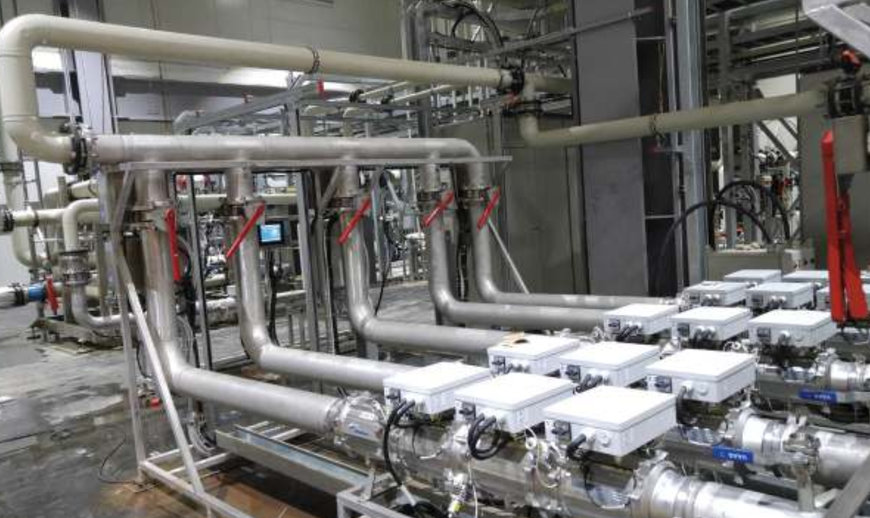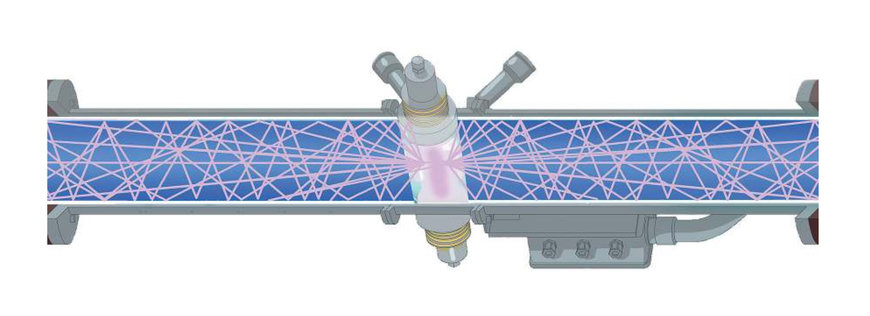www.waterplant.tech
23
'24
Written on Modified on
Atlantium News
Atlantium: Solar PV Manufacturing Plant Installs Hydro-OpticTM UV System for TOC Reduction
A Solar Photovoltaic manufacturing plant with a capacity of 1.2 GW in India relies on ultrapure water for use in the production of solar PV cells; impurities must be removed.

Faced with elevated Total Organic Carbon (TOC) levels of 500 ppb, the facility selected and installed the Hydro-OpticTM (HOD) UV treatment system as a non-chemical treatment approach to remove organics and reduce TOC levels.
In July 2017, five Hydro-Optic UV systems (Model RZ163-13HP) were commissioned at the Solar PV plant in India. The HOD UV systems were installed immediately after the double-pass reverse osmosis (RO) system to accommodate a flow rate of 20-100 m3/hr (88- 440 gpm). The proprietary medium pressure UV systems were supplied with a % UVT monitor, UV dose monitor, and flow meter. The systems were installed with pure silica UV lamps that generate 185 nm of UV, the dose required to destruct organic contaminants present in the water.
Following the full-scale installation of the Hydro-Optic UV technology at the Solar PV plant, the technology has reduced TOC concentrations from inlet values of approximately 500 ppb down to effluent values of less than 20 ppb. The technology is proven to be an environmentally friendly, non-chemical method to reduce TOC concentrations for the facility.
Hydro-OpticTM UV Technology: Principles of Operation
The Hydro-Optic UV technology is a physical process for disinfection that exposes bacteria, viruses and protozoa to germicidal wavelengths of UV light, measured in nanometers (nm), to render them incapable of reproducing or further infecting a water system. Germicidal wavelengths greater than 200 nm are used for disinfection applications while wavelengths below 200 nm are best suited for TOC reduction. UV light is an effective TOC reduction tool. TOC reduction is achieved via three types of reactions initiated by UV that work to destroy and/or remove organic carbons.

Atlantium Hydro-OpticTM UV Lamp and Chamber
The primary reaction is an oxidation process that begins when high-energy 185 nm UV is used to dissociate water molecules, thereby creating hydroxyls (free OH– radicals). The hydroxyls created by UV are highly reactive and readily combine with other molecules, such as the hydrocarbon molecules that make-up TOCs. When hydroxyls combine with the TOC hydrocarbons, they form water and carbon dioxide molecules; TOCs are destroyed and the oxidation is complete.
The second reaction works to remove/destroy TOCs whereby the ultraviolet photons dissociate organic molecules directly. This results in TOC removal by means of destruction. A third UV reaction occurs when deionization is added downstream of a UV reactor. Ultraviolet energy will ionize TOCs, which allows for subsequent removal by a deionization system. A side benefit of using UV for TOC reduction is that the TOC lamps will also generate significant levels of 254 nm output and consequently provide high levels of microbial reduction (disinfection).
The HOD UV technology measures four critical parameters including % UVT, flow rate, UV lamp intensity (kW) and UV apparatus (consisting of Total Internal Reflection and Dose Pacing) in real time to maintain the minimum required UV dose. The system uses a proprietary Total Internal Reflection (TIR) based design that when coupled with the comprehensive monitoring of critical parameters allows the system to achieve and maintain the specified UV dose.
The system’s patented TIR technology, which is similar to fiber optic science, recycles UV light energy within the HOD UV chamber. The core of the technology is its water disinfection chamber made of high-quality quartz surrounded by an air block instead of traditional stainless steel. This is especially important given that in traditional UV systems metal adsorbs or “detracts” the UV dose the closer it gets to metal, whereas the TIR enhances the UV dose.
This configuration uses fiber optic principles to trap the UV light photons and recycle their light energy. The photons repeatedly bounce through the quartz surface back into the chamber, effectively increasing their paths and their opportunities to inactivate microbes and oxidize organic compounds.
www.atlantium.com

